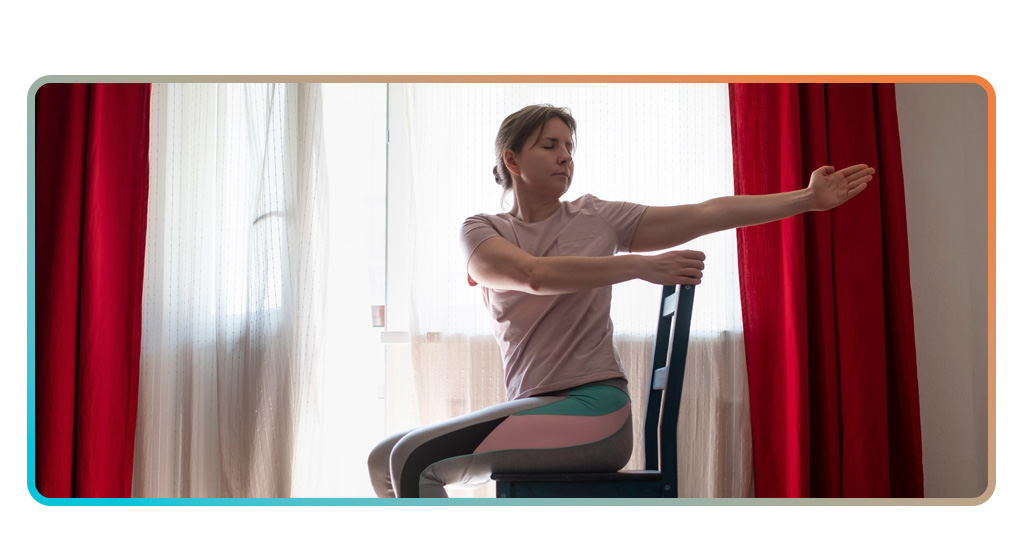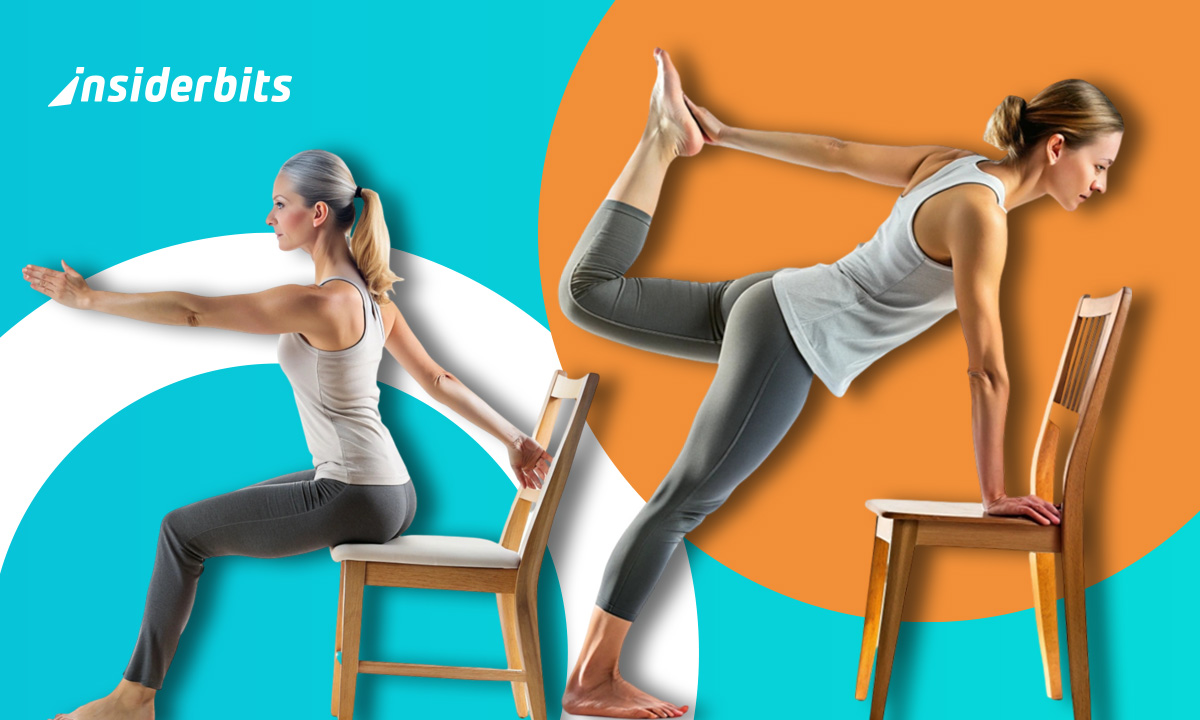Between long office hours, Netflix binges, and general exhaustion, the idea of a full-blown workout often feels like a distant fantasy. But what if you could get stronger, improve flexibility, and even boost circulation without leaving your chair? Chair workouts are the underrated fitness hack for anyone who wants to move more but isn’t about to start doing burpees in their living room.
Whether you’re recovering from an injury, stuck at a desk all day, or just prefer low-impact movement, seated exercises can be surprisingly effective. No gym membership, no fancy equipment—just you, a sturdy chair, and a few minutes to spare. Here’s how to turn sitting time into fitness time.
- Un'applicazione gratuita per l'allenamento a casa per tutti
- Abdominal Workout App: Build Abs in 30 Days
- Raggiungete i vostri obiettivi di allenamento a casa con EresFitness
How chair workouts improve fitness anytime
Chair exercises aren’t just for seniors or rehabilitation—they’re a legitimate way to:
- Counteract sitting all day: combat stiffness and poor posture from desk work;
- Build strength discreetly: tone arms, legs, and core without drawing office attention;
- Improve mobility: gentle movements enhance joint flexibility and circulation;
- Boost energy: short routines can refresh you better than another cup of coffee.
As WebMD highlights, even 10 minutes of seated exercise daily can significantly benefit cardiovascular health and muscle tone.
Exercises you can do while seated at home or office
These moves prove you don’t need to stand to break a sweat:
- Seated marches: lift knees alternately to engage core and improve circulation;
- Chair squats: stand up/sit down slowly to strengthen legs (use armrests if needed);
- Overhead presses: use water bottles or books as makeshift weights;
- Seated twists: rotate torso to mobilize spine and relieve back tension;
- Ankle circles: prevent stiffness from prolonged sitting.
Il British Heart Foundation recommends these for office workers and those with limited mobility.
Best apps for guided low-impact routines
When you’re already sitting down, the last thing you want is an app that makes fitness feel complicated.
These two options cut through the nonsense with straightforward, effective workouts you can actually stick to (without needing to change out of your pajamas).
Stay Seated Fitness
For Android users who want a no-frills approach, Stay Seated Fitness delivers exactly what it promises: workouts you can do without leaving your chair.
The app shines with its bite-sized routines that target specific areas—perfect for office workers who need a discreet shoulder loosener between meetings or seniors looking to maintain mobility. What makes it stand out?
- Micro-workouts as short as 5 minutes (because sometimes that’s all you’ve got between Zoom calls);
- No equipment needed beyond your chair—though it creatively incorporates walls and desks for some moves;
- Customizable reminders that actually work (unlike your New Year’s resolutions);
- Progress tracking to prove you’re getting stronger even while seated.
The interface is refreshingly simple—no flashy animations, just clear instructions and timer-based workouts. While the free version has ads, they’re less intrusive than your coworker’s keyboard tapping.
4.5/5
Chair One Fitness
If you prefer guided video instruction, Chair One Fitness brings professional trainers to your iPhone. Developed with physical therapists, this app goes beyond basic exercises to address real-world needs:
- Posture-focused routines that undo the damage of slouching over laptops;
- Back pain relief sequences that actually work (tested by people who sit 8+ hours daily);
- Adjustable difficulty levels—from “just getting started” to “chair fitness warrior”;
- 30-day challenges that prove consistency beats intensity.
The production quality rivals premium fitness apps, with multiple camera angles ensuring you don’t miss proper form.
While the free version offers solid content, the subscription unlocks specialty programs like “Travel-Friendly Routines” and “Energy Boosters.”
4.7/5

Strengthen core, legs, and arms with no equipment
Chair workouts can target all major muscle groups:
- Core: seated knee lifts, oblique twists, pelvic tilts;
- Legs: heel/toe raises, seated leg extensions, inner thigh squeezes;
- Arms: chair dips, seated push-ups against armrests, bicep curls with household items.
Our home workout app guide shows how to maximize minimal equipment.
Safety tips for beginners and seniors
The last thing anyone wants is to injure themselves while trying to prevent injuries. Chair workouts may be low-impact, but that doesn’t mean they’re no-risk (especially when your “fitness equipment” is that wobbly dining chair from IKEA).
Here’s how to stay safe while getting stronger:
Chair selection: your workout’s foundation
- Ditch the wheeled office chair, unless you want your bicep curls to turn into an accidental room tour;
- Armrests optional but helpful for stability during seated stands or dips;
- Test for sturdiness—if it creaks when you sit normally, it’s not workout-ready;
- Height matters: Feet should rest flat with knees at 90 degrees (use a pillow if needed).
Posture: the difference between benefit and backache
- Engage your core lightly (imagine zipping up a tight pair of jeans) to protect your spine;
- Shoulders down and back—no hunching unless you want to resemble a question mark;
- Feet planted firmly to create a stable base (crossed legs defeat the purpose);
- Eyes forward to keep your neck aligned (no staring at your lap like it holds life’s answers).
Pacing: slow and steady wins the mobility race
- First-timers: start with 5-minute sessions twice daily—this isn’t a marathon;
- Build gradually: add 2 minutes weekly until reaching 20-30 minute sessions;
- Rest days count: muscles strengthen during recovery, not while working.
Breathing: the most forgotten fundamental
- Exhale during exertion (when lifting limbs or twisting);
- Inhale during release (returning to start position);
- If you’re turning red, you’re probably holding your breath like it’s a hostage situation.
Pain vs. discomfort: know the difference
- Good discomfort: mild muscle burn, gentle stretching sensation;
- Bad pain: sharp, shooting, or localized joint pain;
- Red flags: dizziness, nausea, or sudden weakness—stop immediately.
Senior Planet particularly recommends chair yoga for its controlled movements and emphasis on mindful breathing.
Their research shows participants gain 23% better balance after 8 weeks of regular practice—without leaving their seats.
Final thoughts
Chair workouts prove fitness doesn’t require extremes—just consistent movement. You may use them as standalone exercises or as a stepping stone to more activity, they’re a smart way to make daily sitting work for you, not against you.





